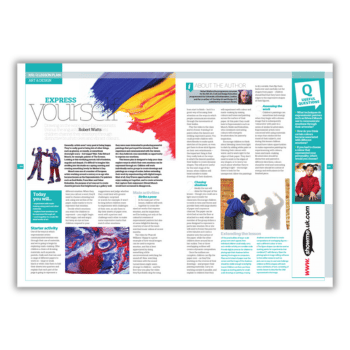This emotions lesson plan draws on the work of the Expressionists (minus the anguish). Help children channel their emotions through distinctive brushstrokes and vibrant colours…
Emotions lesson plan learning objectives
- Experiment with mark-making using paint and other materials
- Explore how emotions can be expressed through art
- Work together to create life-sized works of art
The Expressionists and emotion
Generally, artists aren’t very good at being happy. They’re really good at being lots of other things, such as gloomy, or moody, or sometimes downright scary – but happy? Nah.
Take Edvard Munch, for example, painter of The Scream. Looking at this terrifying portrait, full of isolation, anguish and despair, it’s difficult to imagine him strolling into his studio on a spring morning and creating something lovely for Mother’s Day.
Munch was one of a number of European artists working around a century or so ago who became known as the Expressionists.
For painters such as Emil Nolde, Franz Marc and Oskar Kokoshka, the purpose of art was not to create cheerful pictures that brightened up a gallery wall: they were more interested in producing powerful paintings that portrayed the intensity of their experience and communicated with the viewer.
Create artwork on a range of scales
Art, they believed, was essentially an opportunity to express our emotions. This emotions lesson plan is designed to help your class explore ways in which their own emotions can be expressed through art.
Children will work individually and in groups to create drawings and paintings on a range of scales, before extending their work by experimenting with digital images.
Most of all, they’ll have opportunities to really enjoy making art together, and to create artworks that capture their enjoyment. Edvard Munch would have screamed in disapproval…
Robert Watts is the programme convener for the MA Art, Craft and Design Education programme at the University of Roehampton, London. He’s co-author of Teaching Art and Design 3-11, published by Continuum Books. Browse more KS2 art ideas.











